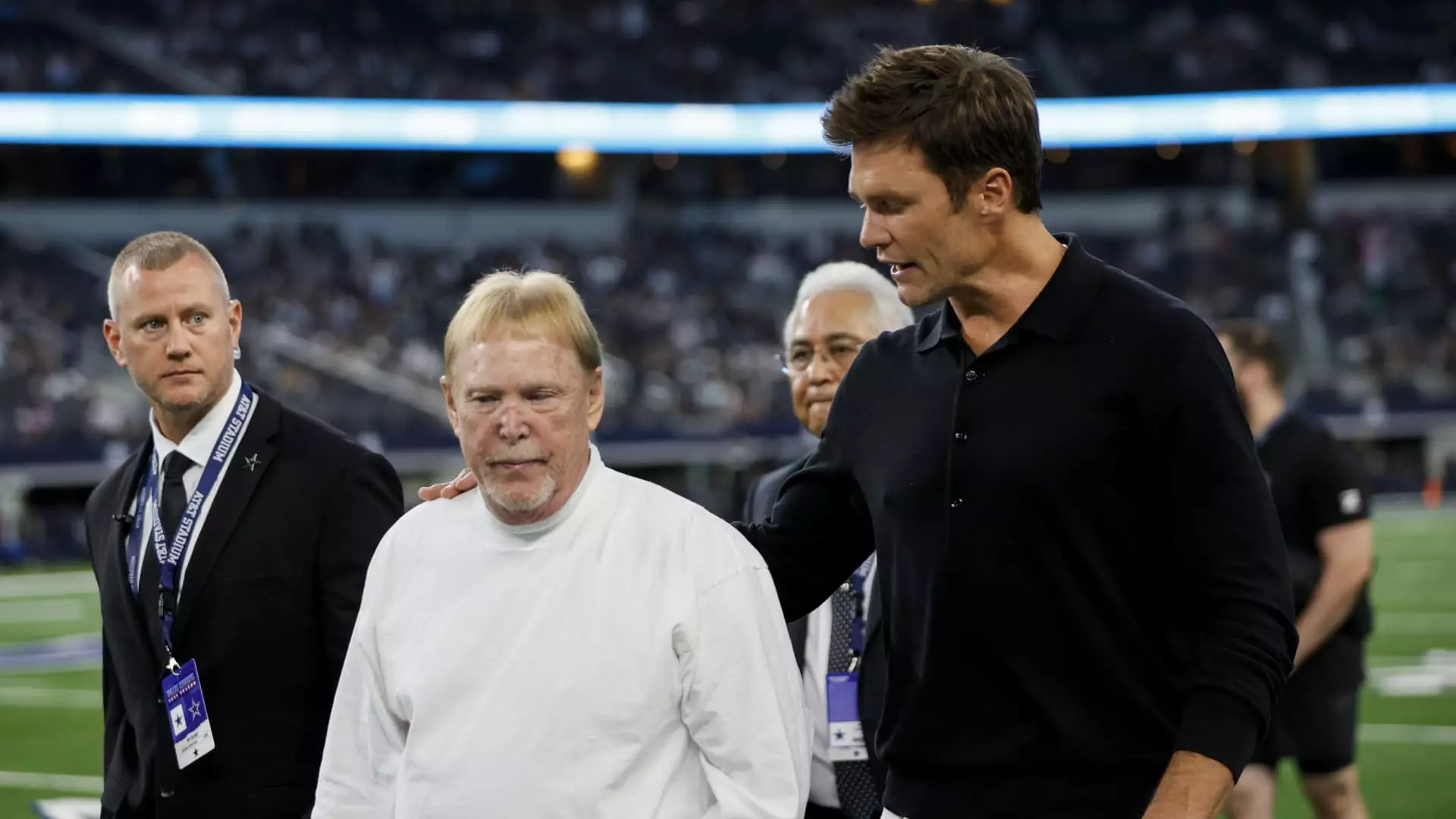The National Football League (NFL) is no stranger to change, but Tom Brady’s recent acquisition of a minority stake in the Las Vegas Raiders marks a significant milestone—not only in his illustrious career but also in the broader narrative surrounding athletes’ transitions from players to owners. This strategic investment signals a potential shift in how sports icons engage with the teams they once played for and opens discussions about the evolving landscape of sports ownership.
On Tuesday, NFL owners officially approved Brady’s acquisition of a 10% stake in the Raiders, a significant move considering his status as a seven-time Super Bowl champion. Along with his business partner, Tom Wagner, the duo invested around $220 million in a franchise valued at approximately $3.5 billion. What makes this deal particularly intriguing is the unique valuation—though the league ranks the Raiders as the fifth-most valuable team at $7.8 billion, Brady and Wagner effectively secured their stake at a steep discount. Such valuations highlight the disparity between what owners perceive as worth and what strategic investors are willing to pay, raising questions about NFL franchise valuations and market dynamics.
Moreover, the deal entails a 10% “flip tax” that goes to the league’s other owners, a peculiar stipulation that underscores the tight-knit nature of NFL ownership and the layers of financial interactions among its members. This tax serves as a financial buffer, ensuring that existing owners gain a return whenever new investors join the league, creating an environment that fosters both exclusivity and collaboration among elite investors.
The Las Vegas Raiders have undergone a remarkable transformation since relocating from Oakland in 2020. Previously regarded as a middle-of-the-pack franchise, the team now boasts significant valuation due to increased revenue streams and a solid fanbase. In 2023 alone, the Raiders generated $780 million, ranking third in the league, fueled by both high ticket prices and diverse revenue sources stemming from Allegiant Stadium. While the stadium capacity (65,000 seats) is among the smallest in the NFL, it compensates with ticket prices—the average being $169, making it the highest in the league. This financial resurgence not only validates the decision to relocate but also opens the door for further investments and enhancements within the franchise.
Brady’s investment—albeit a minority one—could attract further attention and support for the Raiders as he brings an unparalleled competitive spirit and brand to the organization. His vision to honor the Raiders’ rich history while exploring new opportunities to enhance fan engagement and overall brand value demonstrates a level of acumen that could pivot the franchise toward a more prosperous future.
Brady’s transition from player to owner—joining the ranks of just a handful of former NFL players who have made such a leap—also raises questions about the broader implications for the league. With players like Richard Seymour—who acquired a less than 1% stake in the Raiders—following suit, there’s a growing trend of former athletes blending their legacies into ownership roles. This shift could foster a more participatory culture where former players leverage their experiences and connections for a more dynamic NFL ecosystem.
However, Brady’s ownership comes with notable restrictions due to his broadcasting deal with Fox Sports. While he may participate in the business side of the Raiders, his capacity to engage with team operations will be limited. The NFL’s regulations around such conflicts of interest exemplify the challenges faced by modern athletes who aspire to multifaceted roles within sports, highlighting the complexity of intertwining media, sports, and ownership.
Tom Brady’s foray into NFL ownership may be both a personal milestone and a statement on the evolving nature of sports careers. As he steps into this new role, the impact of his input—combined with the contemporary dynamics of franchise valuations—both invites curiosity and promises excitement for the Raiders and the league as a whole. Just as he revolutionized the quarterback position, Brady now has the potential to redefine what it means to be an owner in the NFL. As fans and analysts alike closely observe the unfolding story, one thing is certain: Tom Brady is not finished making headlines, and his venture into ownership is packed with potential for both the Raiders and the league.

Leave a Reply